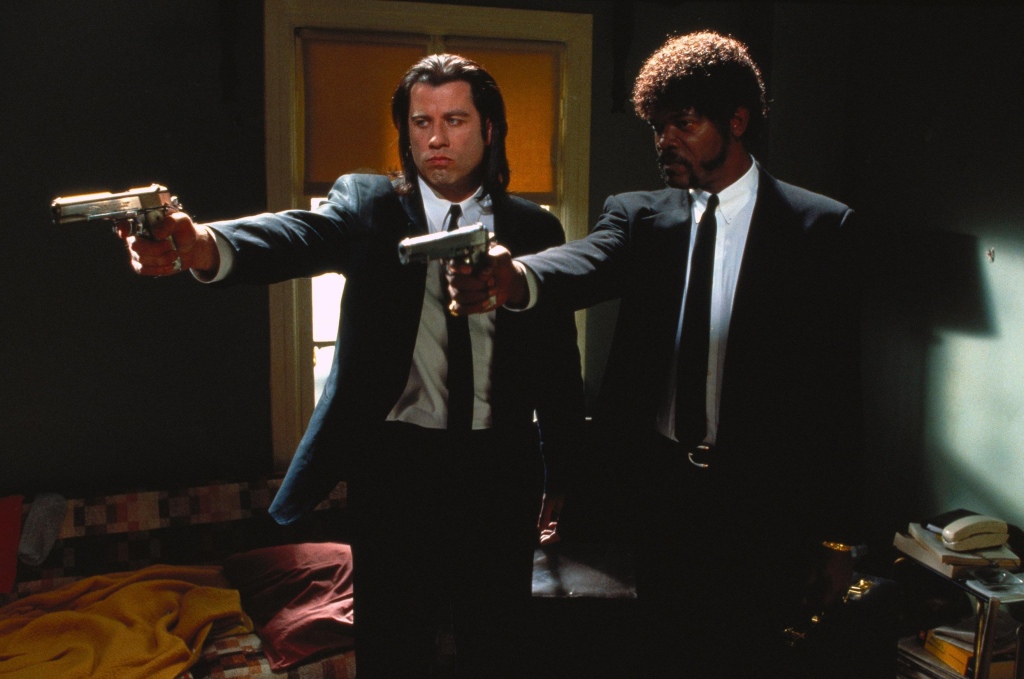Pulp Fiction was written by Quentin Tarantino between 1992 and 1993, and was originally turned down by Tristar pictures for being ‘too demented.’, but was the fist film fully distributed by Miramax after co-chairman Harvey Weinstein saw it. It won the Palme d’Or at Cannes film festival in 1994, having been made with a budget of $8.5 million and eventually making a box office success of $213.9 million.
It is considered by critics as a touchstone of post modern film due to its entirely unique and unconventional narrative structure. It’s use of an A-List cast also brought the film much attention, regardless of the long-anticipated second film by the director, who had made notoriety after his 1992 crime thriller Reservoir dogs brought him into the mainstream.

Pulp Fiction is an experimental film, telling a conventional, cliche gangster story through a nuanced form of narrative. They film was also so influential due to Tarantino’s use of violence to ironically create humour and snappy and clever dialogue that does not add to the plot in any way, self-reflexive style, all which would come to represent Tarantino as an auteur director. The film homages more classic, indie cinema, and is considered his masterpiece particularly for its screenplay.
Tarantino created a riveting and enthralling movie by maintaining an escalating plot that is conveyed in a more nuanced way by the unique narrative. His dialogue is also honest and genuine-seeming, as characters talk among themselves about topics that don’t necessarily relate to the plot in any way, building his characters and their views on different matters. There is always something at stake in his films, creating conflict in all interactions, no matter how trivial, which maintains the viewers’ attention. He also handles subtext in a way that maintains tensity in a scene, and therefore viewer interest, as seen in the prologue scene in the diner.
He was closely involved in the production process, communicating with the actors and giving direct instructions. He uses non-diegetic music to add to his scenes, adding a style, pace to tone to a scene. In pulp fiction, Tarantino uses the narrative structure to reveal things about the characters, such as Vincent’s death due to his dismissal of Jewel’s moral awakening after a near death experience. He also immerses the audience into the narrative immediately by having two people discussing organised crime casually, bringing them into the story and the characters. By the end of the film, our perspective has changed a lot between characters, as Tarantino follows separate characters and revealing things about them between scenes, such as Jewel’s job to kill, the resolution of Butch and Wallaces conflict, and Vega’s death. Characters feel relatable due to the clever dialogue, scenes are engaging through dialogue undertones andcasual violence, and an engaging narrative that immerses the audience through what it reveals about the plot and how it keeps the audience on their toes. It also uses experimentalism in the narrative structure to create a new and subjective experience for the audience who can view the film in a way they want, therefore encouraging audience participation through a structure that demands attention and experimental methods that create a memorable and engaging audience experience.
You must be logged in to post a comment.